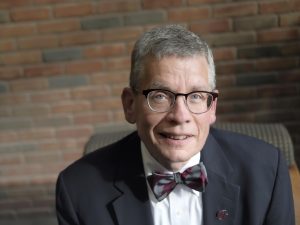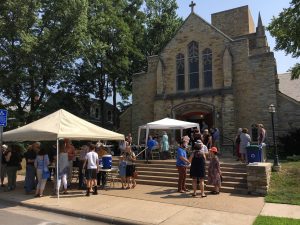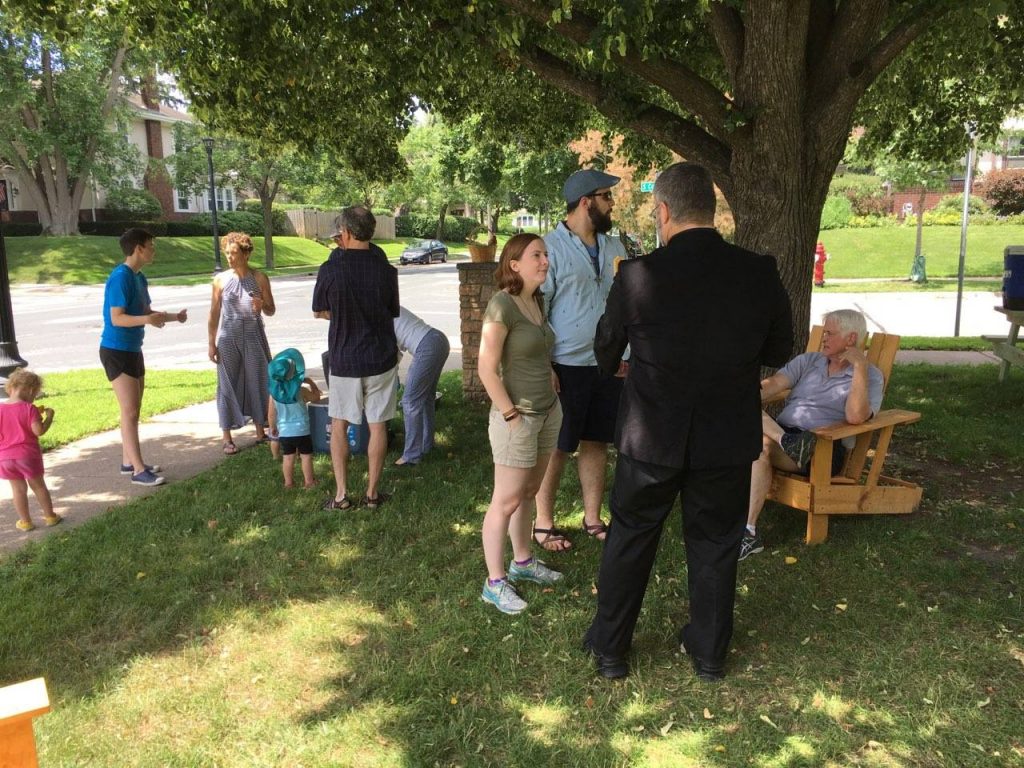Today’s blog post comes from Kristina Fruge’s sermon at Augsburg University’s chapel on January 28, 2020. To listen to her message, click the soundcloud link below. To read her message, you can find the transcript below the soundcloud link.
Pay Attention – Lament – Be Bold
The theme in chapel this month as been: “Public Church: Sticking with Love.” Doing so, in part, by leaning into Dr. King’s words from his speech in August of 1967: “And I say to you, I have also decided to stick to love…hate is too great a burden to bear.” The question Pr. Babette & Pr. Justin posed to those preaching on this theme was:
Amid chaos and hardship in our society, how might we as church stick to an ethic of love and embody a public witness that works for justice and peace in God’s world?
This is a big question. One pleading for attention and demanding a response. It is a question directed at the church. And as someone born, raised, educated and employed in the Evangelical Lutheran Church of America, the nation’s whitest Christian denomination…I offer a response to this question as someone a part of this community….
Right upfront, let me name this: The church has failed to respond to this question. It isn’t that we’ve been holding fast to an ethic of love and simply need to rise to the increasing challenges and chaos in the world. No. The hardship we see, which seems to grow in intensity each day, we in fact share responsibility for. I’m afraid that we, church, have been doing more to contribute to the hardship and chaos than we have been doing to confront it.
I know many of you could share examples to the contrary – examples of love lived out and people coming together for peace and justice. Dr. Martin Luther King and many others who took the charge in the civil rights movement would be examples of this. Please, do not hear me dismissing the miracles of how the Holy Spirit has worked in and through this church and each of you in this place. God’s witness does live here. I’ve seen it. However, I would suggest that more often the sacred ways God’s love has showed up in the world have been in spite of the church, rather than because of it.
The call to be neighbor beyond the boundaries of our own comfort and imagination will necessitate that we, church, face some uncomfortable realities.
- Our American church history was built in tandem with breaking bodies and stealing homes through the unholy marriage between Christianity, slavery and the genocide of indiegenous peoples. The church has had a hand in countless casualties.
- This history has not been righted and the casualties continue. The church, like many institutions, continues to be complicit in perpetuating unjust systems that benefit the dominant culture and harm those with less power and privilege.
- We in the church have too often opted for a lukewarm misrepresentation of the gospel, one that quiets the radical, disruptive message and life of Jesus in favor of “nice guy” Jesus. We like the idea of loving the whole world, but we prefer to keep the fullness of Jesus and our neighbor at arms length.
These are uncomfortable and dangerous realities. I am not going to dissect them further here, but they must be named as they drastically shape the landscape we, church, must figure out how to travel upon. What I offer in our short time together, are three invitations to the church that I believe offer more faithful bearings from which to navigate the realities of this world and the call to enter into it.
Our first invitation: Learn to pay attention. Mine the gaps.
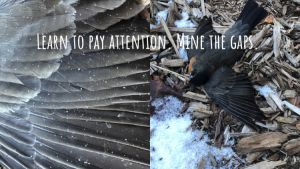
Author Annie Dillard spends much of her writing pondering the curious gaps in the natural world. (read quote – Pilgrim at Tinker Creek, p. 268-269) I revisit these words often because they remind me to slow down and be present and open. This attention to the gaps has helped me learn to pay attention to the world. All of it. The beauty, the heartache, the sacred.
This practice of paying attention helps me notice the gaps here too – between us people. You know these gaps. They exist in the spaces where broken systems damage people’s lives, safety, identity and opportunity at a livelihood. These gaps often exist along racial, class, gender, religious or political lines. They show up at the borders we arbitrarily draw between humanity and all of creation. These gaps can be so overwhelming that they create another gap, the one that exists between me and my neighbor and my fear that I’m incapable of crossing it sufficiently enough to respond, to repair. The gap between the heartache of the world and our ability to enter into it in reparative ways is staggering.
I suppose it’s not so surprising that we often sidestep the gaps, if we have the privilege to do so. And when we don’t have that privilege to do so, we are left carrying the heavy burden of life, seemingly alone. The heartache – my own and my neighbors – is something I would rather bypass most days for fear of what I might really encounter or be asked to respond to if I enter in.
Here is where the psalmist comes in. And our second invitation…
Enter into lament. Hold space for confession.
Let me reread just a few stanzas from our Psalm this morning…
My tears have been my food
day and night,
while people say to me all day long,
“Where is your God?”
Deep calls to deep
in the roar of your waterfalls;
all your waves and breakers
have swept over me.
My bones suffer mortal agony
as my foes taunt me,
saying to me all day long,
“Where is your God?”
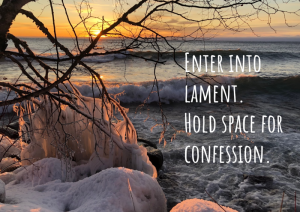
The text is raw. This lament, like many of our psalms, stings. I find myself simultaneously drawn to its words and resisting them. The psalmist’s pleas for God’s presence and their prose, naming the rushing waves of deep heartache, stir memories of pain. Have your tears ever been your food, day and night? Have your bones ever ached in agony? Have you ever felt abandoned, not knowing where your help would come from?
Lament psalms are the most common psalm in scripture, yet ecumenical studies of worship liturgies, hymnals and contemporary Christian worship music have found that our American biblical narrative is heavily lopsided in favor of praise and celebration. The psalms and other songs of lament are the most often omitted.
Lament is not a posture the church in America often opens itself up to. Soong-Chan Rah, pastor and author of Prophetic Lament, says this: “The American church avoids lament. The power of lament is minimized and the underlying narrative of suffering that requires lament is lost. But absence doesn’t make the heart grow fonder. Absence makes the heart forget…We forget the necessity of lamenting over suffering and pain. We forget the reality of suffering and pain.”
Walter Bruggemann says that the main point of lament is to point to the fact that, “Life is not right. It is now noticed and viced that life is not as it was promised to be.” The voices of lament that linger in neighborhoods, homes, and schools… in rivers, farmland and forests across America in 2020, are exactly the kinds of voices we should be straining to hear. How will we ever know what our proclamations of good news must sound like, taste like, feel like, look like, if we do not dwell in the places of lament and let the waters of the world’s grief swell and speak.
We must be willing to pay attention to the gaps and enter the places of lament. And when lament speaks truth to unjust realities, we must be open to how our proclamation requires confession.
And on that note, the last invitation I offer this morning is this: Be brave. Be humble.
This is why we need more than “nice guy” Jesus. Nice guy Jesus thinks of love as a warm feeling we can have for others at a safe distance. Nice guy Jesus works to protect the comforts of privilege and would never dream of challenging our complacency.
Jesus wasn’t a nice guy. Loving yes, absolutely yes. Nice, no. The bold intensity of the way Jesus loved brought him out into the gaps of this world, into the places where those who were most forgotten dwelled. The bold intensity of the way Jesus loved brought him face to face with gaps in systems and practices that were way out of line with God’s intentions for creation. The way he loved was so radical, it earned him many enemies and it ultimately got him executed. This love knew the reality of suffering and pain. This love did not sidestep heartache. It stepped further into it.
This is the kind of love Dr. King aligned himself with. The kind of love was and is a verb. Like Jesus’ love, it lives in bodies and steps into the gaps of heartache, pain, and injustice. This embodied love is a way of being in the world. It is the source of courage to do what is right in the face of fear and uncertainty.
Sometimes I need to remind my nine year old, you can be afraid and brave at the same time. Whether he is attempting to rock climb for the first time or needs to go into the dark basement alone to get a clean pair of socks, I tell him, you can be afraid and still find courage to do what you need to do. I think we church, can do the same. It will require a posture of trembling and trust. We will need to be brave and humble.
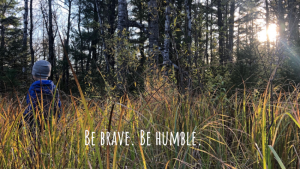
If embodying a public witness of justice and peace in the world that aligns with Jesus is our aim, then we must enter the places where deep calls to deep. Where the waves slam with a forceful intensity, where we are in over our heads. These places are immense, frightening, powerful, and even, beautiful. We can do this trusting God is in it, already working in the mystery, beckoning the waves to tide towards justice.
As we go about from this place today, I plead with you to carry these invitations:
Learn to pay attention. Mine the gaps.
Enter into lament. Hold space for confession.
Be brave. Be humble.
And for heaven and earth’s sake, stick to love and stick together. Amen.

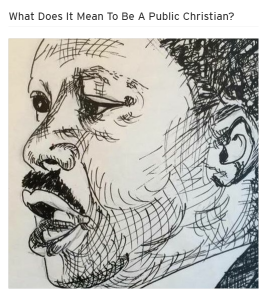
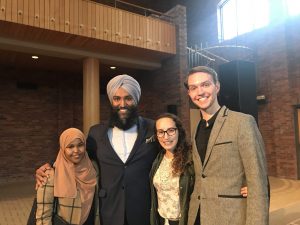
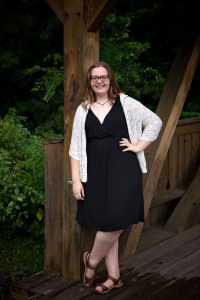
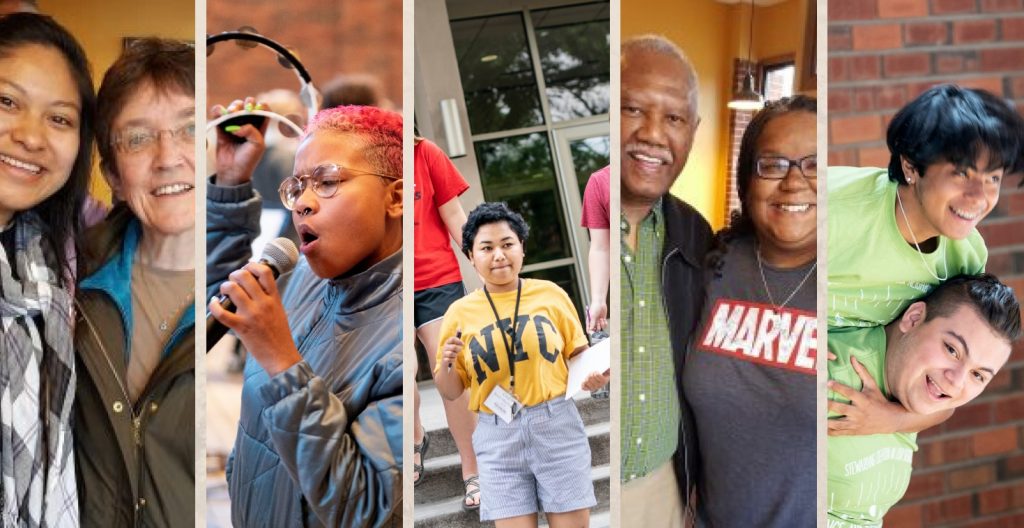
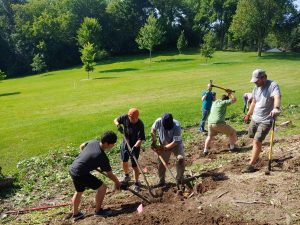
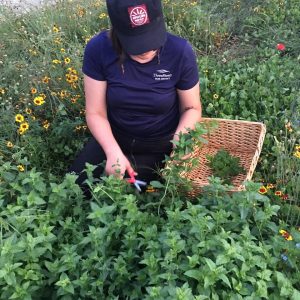
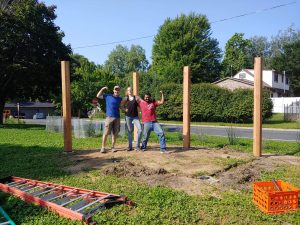
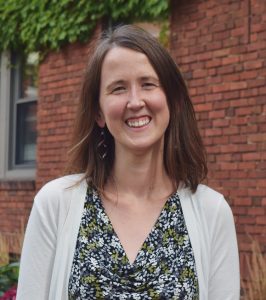 Lonna Field
Lonna Field